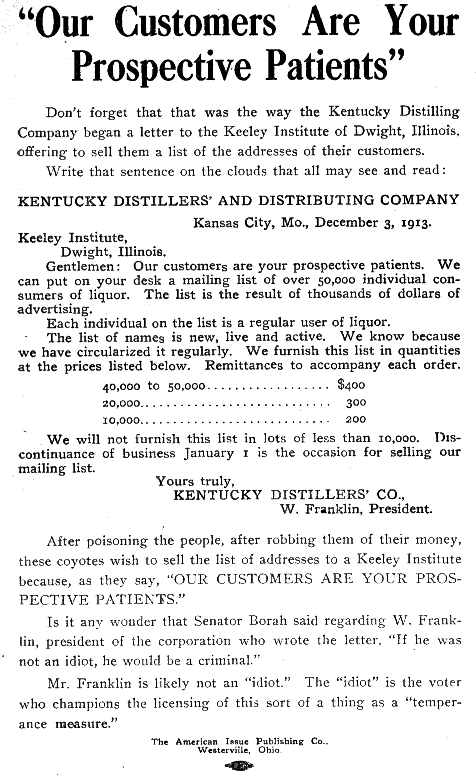Growing Influence
Struggle for Influence
The League struggled through the 1890s with organizational and financial difficulties. Howard Hyde Russell and other leaders had to do their own solicitation in order to obtain income to support themselves. In the early years of the 20th century their situation turned around. By 1908, only four states did not have state leagues. In the ten years between 1905 and 1915 the number of churches cooperating with the League more than doubled.
In 1903, the Reverend Purley Baker, superintendent of the Ohio Anti-Saloon League, was elected to be general superintendent of the national league. Under his leadership a group of organizations that had been united in name only became a federation run by national leadership with national goals. Howard Hyde Russell turned his attention to other efforts, among them the formation of the Lincoln-Lee Legion. This pledge program provided the League with a greater entree into the churches.
Election of Ohio Governor Proves League's Clout
The League's turn around was epitomized by its success in the 1905 contest for the office of governor of Ohio. Republican Ohio Governor Myron P. Herrick had thwarted the League's push for local option legislation known as the Brannock Bill. The governor did not agree with the scope of the bill and threatened to veto it. He worked to have it sent back to conference committee to be rewritten. The League's leaders were most unhappy with his actions and sought to unseat him in his bid for reelection in 1905.
Knowing that Ohio was a Republican state they chose to try to find a candidate to run against him for his party's nomination. When that failed they turned to the Democrats. The power and prestige of their organization was on the line in this very visible race. They threw their support to the Democrat John M. Pattison. He won by a substantial margin in an election year that saw Republicans winning all the other state offices. This proved the clout of the League.
Liquor Interests See League as a Threat
By this time the liquor interests began to realize that the League was a threat to them. One of their publications cautioned that the League was not peopled by fanatics but rather by "men with unusual ability, financial capitalists with very long purses, subscribed to by hundreds of thousands of men, women and children who are solicited by their various churches, advised by well paid attorneys of great ability..."
The League was engaged in a war with the liquor interests with both sides attempting to discredit the other.
The liquor interests were not unified and that hurt them in the long run. Many of them were blithely doing business as usual not facing up to the tidal wave overtaking them. Part of the unification problem was the difference in the way the distillers and brewers viewed this new threat. Brewers felt that their products would be exempted from legislation and therefore were not drawn into the energetic battle that the distillers waged.
About the League
Museum Hours
Monday-Saturday: 9am-6pm
Closed on Saturday: 1-2pm
Closed on Sunday









